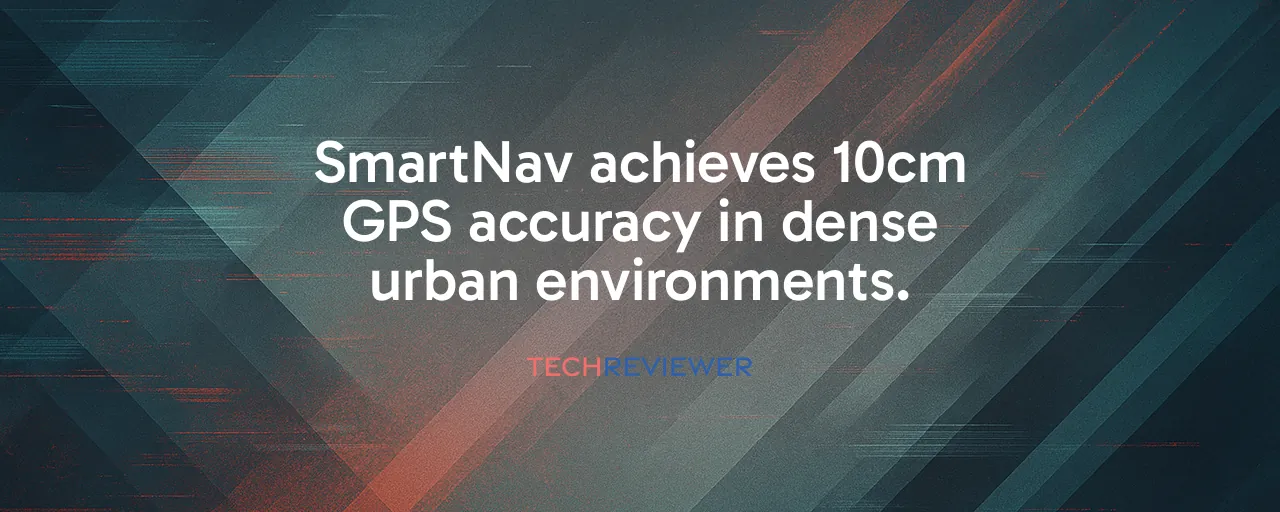Navigating the Urban Maze
Walking through a bustling city, you've probably seen your GPS app pin your location to the wrong street or jump erratically between buildings. This frustration, known as the urban canyon effect, happens when skyscrapers reflect satellite signals, confusing even the best navigation systems. In dense areas like Seoul or New York, GPS errors can stretch from 10 to 20 meters, making it tough for pedestrians, drivers, or autonomous vehicles to pinpoint their exact spot. The issue lies in the physics: signals from satellites 20,000 kilometers away bounce off glass and concrete, delaying their arrival and skewing distance calculations.
This long-standing problem has stumped researchers for decades. Traditional GPS in smartphones or fitness watches typically hits 3 to 5 meters of accuracy in open areas but falters in cities. For applications like self-driving cars, which need lane-level precision, or emergency services racing against time, these errors are a dealbreaker. Enter SmartNav, a new system from the Norwegian University of Science and Technology that's tackling this challenge head-on with a clever blend of tech.
SmartNav's Clever Solution
Here's where things get interesting. SmartNav combines carrier phase analysis, satellite corrections, and Google's 3D building models to achieve a stunning 10-centimeter accuracy 90% of the time, as shown in tests in Trondheim. Unlike traditional GPS, which relies on code-based positioning, carrier phase analysis tracks the wave patterns of satellite signals to calculate distances with far greater precision. The catch? It usually requires devices to stay still for minutes, which doesn't work for moving cars or pedestrians.
SmartNav sidesteps this by integrating free PPP-RTK corrections from Europe's Galileo satellite system, eliminating the need for costly base station networks. It also uses Google's photorealistic 3D city models, now covering nearly 4,000 cities, to predict how signals bounce between buildings. By fusing this data with inputs from Wi-Fi, mobile networks, and sensors, SmartNav delivers smooth, reliable positioning even in the trickiest urban environments.
Real-World Impact in Seoul and London
To see SmartNav's potential, look at two real-world tests. In Seoul's Teheran-ro, a dense urban canyon where GPS visibility drops to just 2 to 3 hours daily, researchers cut positioning errors from over 20 meters to under 5 meters using advanced weighting models and 3D building data. This leap means delivery drivers or rideshare passengers can trust their apps to guide them accurately, even in skyscraper-heavy zones.
Across the globe, London's Fenchurch Street tests showed similar promise. Using shadow matching on Samsung Galaxy S3 smartphones, researchers reduced errors from 14.81 meters to 3.33 meters, a 77.5% improvement. For urban planners, this precision could optimize traffic flow or help emergency vehicles shave critical seconds off response times. These cases highlight a key lesson: combining 3D models with smart algorithms can turn chaotic urban signals into reliable navigation tools.
Who Benefits From Pinpoint Precision
SmartNav's impact reaches far beyond tech labs. Autonomous vehicle developers, like those at Waymo or Tesla, need centimeter-level accuracy to ensure cars stay in the right lane and navigate confidently. Smartphone makers, including Google, Samsung, and Xiaomi, can integrate this tech to make navigation apps like Google Maps more reliable for billions of users. Fitness watch users with dual-frequency GNSS devices will track runs with improved accuracy, while fleet managers can optimize delivery routes in crowded cities.
Urban planners and emergency services also stand to gain. Precise positioning can improve traffic signal timing or guide ambulances through dense streets, potentially saving lives. Even visually impaired pedestrians could benefit from step-by-step guidance systems that rely on lane-level accuracy. The ripple effects are huge, making cities more navigable, efficient, and safe.
Hurdles and Ethical Questions
Despite its promise, SmartNav isn't flawless. It relies on accurate 3D building models, which aren't available for every city and require constant updates as urban landscapes change. Smartphone hardware also poses challenges, as frequent cycle slips in carrier phase measurements can disrupt accuracy, and not all devices handle dual-frequency GNSS well. Plus, the system needs enough visible satellites, which isn't guaranteed in the densest urban canyons.
Privacy is another concern. Centimeter-level tracking could enable unprecedented surveillance, raising questions about data consent and storage. Regulators, like those at the National Highway Traffic Safety Administration, are grappling with how to balance innovation with safety standards for autonomous vehicles. If mishandled, precise location data could fuel invasive advertising or even misuse by authorities, so clear policies are essential.
What's Next for Urban Navigation
SmartNav's breakthrough is just the start. By 2026, dual-frequency GNSS chipsets are expected to be standard in smartphones, driven by demand for better accuracy. Artificial intelligence could further refine algorithms, learning to predict signal reflections in real time. Low Earth orbit satellites might soon join the mix, offering stronger signals less prone to interference.
Collaboration will be key. Open-source projects like RTKLIB could speed up algorithm development, while partnerships between governments and companies like Google could expand 3D city model coverage. If these pieces come together, precise urban navigation could become as common as Wi-Fi, transforming how we move through cities and paving the way for safer, smarter urban mobility.
